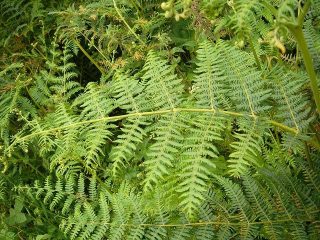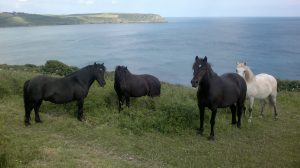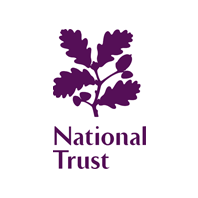Bracken Management On The Roseland
 June time is traditionally when the ranger team would be out managing bracken growth on our sites. This management has been focused on areas where we have stewardship agreements and it is part of the management plan, and also on sites where it has got to a level where it is restricting the growth of other native plants on our coastal slopes.
June time is traditionally when the ranger team would be out managing bracken growth on our sites. This management has been focused on areas where we have stewardship agreements and it is part of the management plan, and also on sites where it has got to a level where it is restricting the growth of other native plants on our coastal slopes.
Bracken (Pteridium aquilinum) is a plant found in many different habitats including woodland, heathland and moorland. Most of our coastal sites have it. It is a large fern that can grow very tall and dense over the summer months, turning brown and dying back in autumn and slowly breaking down over winter. One problem of the plant is the deep leaf litter it leaves behind, which changes the soil composition making it hard for more delicate flowering plants to come up through.
Although we wish to reduce bracken on our sites to improve our coastal grasslands, in some areas it is essential for certain species survival. One example is the High brown Fritillary butterfly. This butterfly is one of the most threatened in the UK and depends on dense bracken covered slopes. Sadly we don’t have this butterfly on the Roseland.
We have spent years rolling or bruising bracken with little impact. Part of the reason is you need to roll the bracken at the right time. And we can’t roll it at all of our sites on the same day! The idea behind rolling the bracken is that it damages the stem when it is growing and effectively makes it bleed to death or at least weakens it for following year so it doesn’t come back as vigorously.
I have been doing some research as to how we can use a different approach that has more of an impact. On a couple of our sites we have cut and raked off the bracken over the summer with the help of our volunteer group. This has the advantage of weakening the plant and also reducing leaf litter. At the Blouth and the Jacka this has been very effective with significant improvements seen after 3 or 4 years. The hope is going forward we can now manage the sites just with grazing late summer and flailing over winter.
At Treluggan we are going to try a slightly different method as it is such a large site. I read that cutting the  bracken up to three times during the summer can massively knock it back. As soon as the blue bells have died back we will do a first cut and then two more later in the summer. We won’t do the trial over the whole site just two sections at the western end. Treluggan is a SSSI and the hope is with better management we can increase the amount of the rare hairy bird’s-foot trefoil plant on the site.
bracken up to three times during the summer can massively knock it back. As soon as the blue bells have died back we will do a first cut and then two more later in the summer. We won’t do the trial over the whole site just two sections at the western end. Treluggan is a SSSI and the hope is with better management we can increase the amount of the rare hairy bird’s-foot trefoil plant on the site.

